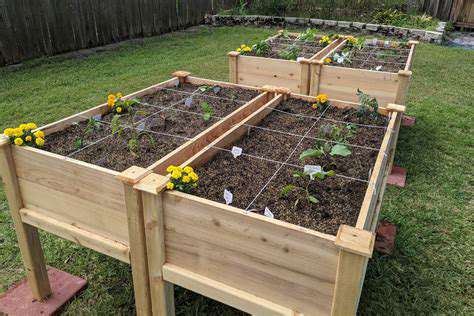Outdoor Activities for Seniors Using Walkers: Safe Options
Prioritizing safety is paramount when exploring parks and trails with a walker. Ensure your walker is properly adjusted and secure to prevent any unexpected movements or slips. It's essential to have a companion for safety, especially on challenging terrain. A friend or family member can offer support and assistance if needed. Always inform someone of your planned route and estimated return time. This is a critical safety measure, providing a point of contact in case of any unforeseen circumstances. Carrying a fully charged mobile phone, along with a charger, is also a wise precaution.
Knowing how to use your walker effectively is essential. Familiarize yourself with the walker's features and limitations. Proper use minimizes the risk of accidents and ensures a stable and comfortable experience. Be mindful of your surroundings, including potential obstacles like uneven ground, roots, or rocks. Always maintain a safe distance from other park visitors. This ensures a smooth and enjoyable outing for everyone.
Choosing the Right Parks and Trails
Selecting parks and trails that are suitable for your walker's capabilities is crucial for a positive and safe experience. Look for well-maintained paved paths or gently sloping trails. Avoid areas with steep inclines or uneven terrain that might strain your walker or pose a risk of falling. Consider the length of the trails, opting for shorter options if necessary. Choose parks or trails that offer accessible features, such as restrooms and shaded areas, to enhance comfort and convenience. Look for parks with designated areas for walkers and other outdoor enthusiasts to ensure a harmonious environment.
Researching reviews or recommendations from other walker users can provide valuable insights into the suitability of different parks and trails. Their experiences can help you make informed decisions about the best locations to explore. This research can help you discover hidden gems and avoid potential challenges, ensuring a fulfilling and enjoyable outing for you and your walker.
Accessible Recreation and Socialization
Importance of Accessible Recreation
Accessible recreation is crucial for seniors using walkers. It allows them to maintain physical health, combat isolation, and foster a sense of community. Engaging in activities tailored to their needs boosts their morale and self-esteem, preventing feelings of helplessness and promoting a positive outlook on aging. Finding activities that are both enjoyable and manageable with a walker is key to successful participation.
Regular physical activity, even with limitations, is vital for seniors. It helps maintain muscle strength, joint flexibility, and cardiovascular health, which are all important factors in maintaining independence and preventing age-related health issues. Accessible recreation programs provide a safe and supportive environment for seniors to engage in these activities.
Choosing the Right Activities
When selecting outdoor activities for seniors using walkers, prioritize those that are low-impact and easily adaptable to their mobility limitations. Walking paths, gentle hikes, or visits to parks with accessible features should be considered. Activities like bocce ball, shuffleboard, or seated exercises in a park setting are excellent options. These activities promote social interaction and enjoyment without excessive strain on the body.
Consider the terrain and the environment. Smooth, paved surfaces are preferable to uneven or hilly areas. Accessibility features like ramps, handrails, and designated seating areas are important factors to consider when choosing a location.
Benefits of Socialization
Social interaction is essential for seniors, and accessible recreation provides opportunities for connection. Participating in group activities, like walking clubs or organized outings, fosters a sense of belonging and combats feelings of loneliness and isolation, which are prevalent issues among seniors.
These interactions create a supportive network, providing companionship and encouragement during challenging times. Socialization also stimulates cognitive function and can improve mental well-being, contributing to overall quality of life.
Outdoor Walking Paths and Parks
Walking paths and parks offer numerous accessible recreation opportunities for seniors using walkers. Look for paths with smooth surfaces, adequate width, and minimal inclines. Parks with designated seating areas, benches, and accessible restrooms are ideal locations for socializing and engaging in activities. Many parks offer walking trails with different levels of difficulty, allowing seniors to choose a route that suits their individual needs and abilities.
Accessible Recreation Programs
Many communities offer accessible recreation programs specifically designed for seniors using walkers. These programs often include guided walks, exercise classes, and social events tailored to the needs of this population. These programs provide a structured environment with trained staff, making it easier for seniors to participate safely and effectively. Look for programs that emphasize safety, inclusivity, and fun.
Contact local senior centers, community organizations, or recreation departments for details about accessible recreation programs in your area. These resources can provide valuable information about schedules, locations, and any registration requirements.
Finding Accessible Community Resources
Finding appropriate community resources is essential for seniors using walkers. Senior centers, assisted living facilities, and local parks and recreation departments are excellent places to start your search. These organizations often have information about accessible recreation programs, walking paths, and other activities that cater to seniors' needs. It's vital to explore the resources available in your community to find options that meet your needs and preferences.
Don't be afraid to ask questions and seek guidance from staff members. They can provide valuable insights into local accessibility features and offer personalized recommendations based on individual needs and preferences.
Safety Considerations
Safety is paramount when engaging in outdoor activities with a walker. Prioritize locations with good visibility and clear pathways. Ensure you have adequate support and assistance if needed. It is important to consider the weather conditions and dress appropriately. Wear sturdy, comfortable shoes, and bring water and snacks to avoid dehydration and fatigue.
Always inform someone of your plans, including the destination and estimated return time. If possible, consider going with a companion or joining a group for added safety and support. Be mindful of your surroundings and take breaks as needed to prevent overexertion.
Gentle Strolls and Scenic Views

Embarking on a Tranquil Journey
Gentle strolls through serene landscapes offer a unique opportunity to connect with nature's beauty. These peaceful walks, often characterized by gradual inclines and picturesque vistas, allow for a profound appreciation of the environment. Immerse yourself in the tranquility of the moment, letting the rhythmic sound of your footsteps guide you to a place of inner peace.
The gentle rhythm of your steps and the fresh air invigorate your senses, fostering a sense of calm and well-being. The calming surroundings provide an excellent opportunity to clear your mind and reflect on life's journey.
Unveiling Hidden Gems
Exploring less-traveled paths often reveals hidden gems, unexpected vistas, and unique perspectives. These secluded routes can lead to discoveries that surpass the usual tourist trails, offering a more intimate and personal experience. These hidden paths often lead to breathtaking viewpoints that reward the traveler with a sense of accomplishment and wonder.
Venture off the beaten path to discover hidden pockets of natural beauty, unique flora and fauna, and a deeper connection with the surrounding environment. These unassuming locations often hold untold stories, waiting to be unveiled by those willing to explore.
Capturing Memorable Moments
As you stroll, take the time to capture the beauty of the surroundings. Photography, sketching, or simply taking in the scenery through your eyes can transform ordinary moments into extraordinary memories. The vibrant colours, intricate details, and unique compositions are opportunities to document your journey.
Documenting your experience through photography or journaling can add depth and meaning to your walk. These records serve as tangible reminders of the moments shared with nature, allowing you to reminisce and relive the beauty you encountered. The images you capture will not only preserve the moment but also inspire future wanderings.
The Importance of Observation
Pay attention to the details around you, from the delicate petals of a flower to the intricate patterns in a rock formation. Observations like these enrich the experience and deepen your appreciation for the natural world.
Careful observation allows you to connect with the environment on a deeper level, fostering a sense of wonder and respect for nature's artistry. Notice the interplay of light and shadow, the subtle textures of the ground beneath your feet, and the sounds of the wind rustling through the leaves.
Enjoying the Solitude
These gentle strolls offer a unique opportunity for solitude, allowing you to disconnect from the demands of daily life and reconnect with yourself. Embrace the quiet moments, letting go of distractions and immersing yourself in the serenity of your surroundings.
The quietude of nature can be profoundly restorative. Allow yourself time to reflect, contemplate, and find inner peace amidst the scenic beauty. This solitude can be a powerful tool for personal growth and self-discovery.
Health Benefits of Gentle Strolls
Beyond the aesthetic appreciation, gentle strolls offer a multitude of health benefits. Regular walks can improve cardiovascular health, reduce stress, and enhance mood. The fresh air and physical activity contribute to overall well-being and a healthier lifestyle.
Regular physical activity is crucial for maintaining good health. Engaging in gentle strolls on a regular basis promotes cardiovascular health, aids in weight management, and helps regulate blood pressure.
Nebraska's football program has undergone a remarkable transformation in recent years. After a period of relative stagnation, the Huskers have shown significant progress on and off the field. This resurgence is not just about wins and losses; it's about a renewed commitment to excellence across the board, from recruiting strategies to player development and overall team culture. The dedication of the coaching staff, coupled with the talent and hard work of the players, is clearly paying dividends, positioning the team for continued success in the coming seasons.
Adaptive Gardening and Outdoor Crafts

Understanding Adaptive Gardening
Adaptive gardening is a versatile approach to landscaping that emphasizes the unique characteristics of your specific environment. This includes considering factors like your local climate, soil type, and available sunlight. By understanding these factors, you can choose plants that are well-suited to thrive in your particular conditions. This approach reduces the need for extensive watering and fertilizer, promoting a healthier and more sustainable outdoor space.
A key component of adaptive gardening is careful observation. Paying close attention to how plants grow and respond to their environment will allow you to make necessary adjustments to your gardening practices. This proactive approach to problem-solving helps you fine-tune your methods for optimal plant health and growth.
Choosing the Right Plants
Selecting the appropriate plants for your garden is crucial for success. Thorough research is essential to find plants that are naturally resilient to your local climate and soil conditions. This includes considering factors like drought tolerance, frost resistance, and the amount of sunlight the area receives. By choosing plants that are well-suited to your specific region, you can minimize the need for extensive care and maintenance.
Water Management Strategies
Efficient water management is essential in adaptive gardening. Implementing strategies like rainwater harvesting and drip irrigation can significantly reduce water consumption. This approach is particularly important in areas with limited water resources. Proper watering techniques, combined with the selection of drought-tolerant plants, contribute to a more sustainable and environmentally friendly garden.
Soil Health and Improvement
Healthy soil is the foundation of a thriving garden. Understanding your soil type and its needs is crucial. Amending your soil with organic matter, such as compost or mulch, can significantly improve its structure and fertility. This approach enhances drainage and aeration, promoting the growth of healthy roots and strong plants.
Pest and Disease Management
Adaptive gardening also involves proactive pest and disease management. By selecting disease-resistant varieties and practicing proper plant spacing, you can reduce the risk of infestations. Understanding the natural predators of pests can also help manage populations naturally and avoid the use of harmful pesticides. Integrating natural pest control methods is a key aspect of maintaining a healthy and balanced ecosystem in your garden.
Sustainable Practices for Long-Term Success
Implementing sustainable practices is fundamental to adaptive gardening. Composting organic waste, reducing chemical fertilizer use, and utilizing native plants all contribute to a more environmentally friendly approach. These practices not only benefit the environment but also create a more resilient and self-sufficient garden that requires less intervention over time. By embracing these principles, you're fostering a healthier and more sustainable outdoor space for years to come.











